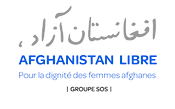
IMPROVING LEARNING CONDITIONS
Ensure that all students can learn in a welcoming and stimulating learning environment by improving school infrastructure in rural areas.
In Afghanistan 3.7 million children are not in school, 60% of whom are girls, this figure rising to 85% in rural parts of the country. One of the major obstacles to education is the poor infrastructure and lack of supplies in schools. Due to overcrowding, lack of infrastructure and supplies, and electricity, many children who attend school study in poor conditions without textbooks for only a few hours a day.
36% of the Afghan population is connected to the electrical grid
11% of Afghanistan's rural population is connected to the electricity grid
41% of all schools in Afghanistan have no buildings. Even when schools do have buildings, they are often overcrowded, with some children forced to study outside. Overcrowding, compounded by the demand for gender segregation, causes schools to split their days into two or three shifts, making a school day too short to cover the entire curriculum.
Afghanistan Libre strengthens the formal education system in Afghanistan and combats these barriers to education by improving the infrastructure of public schools in rural areas. In addition to renovating schools, constructing libraries, and installing solar energy systems, Afghanistan Libre builds recreational facilities so that girls may play and participate in sports. Afghanistan Libre also provides learning materials so that students may flourish in a stimulating, welcoming, and learning conducive environment.







